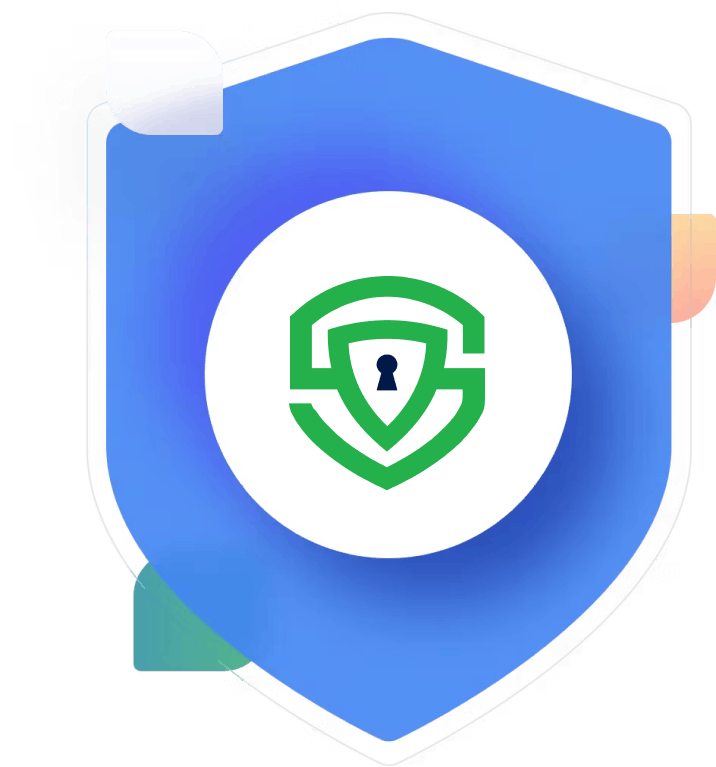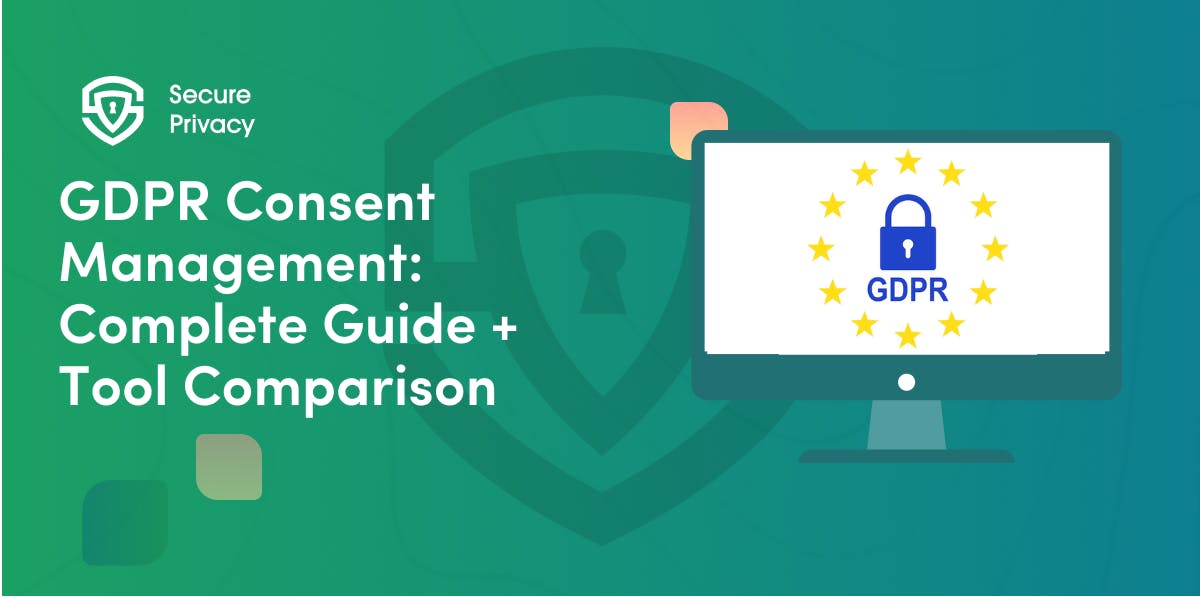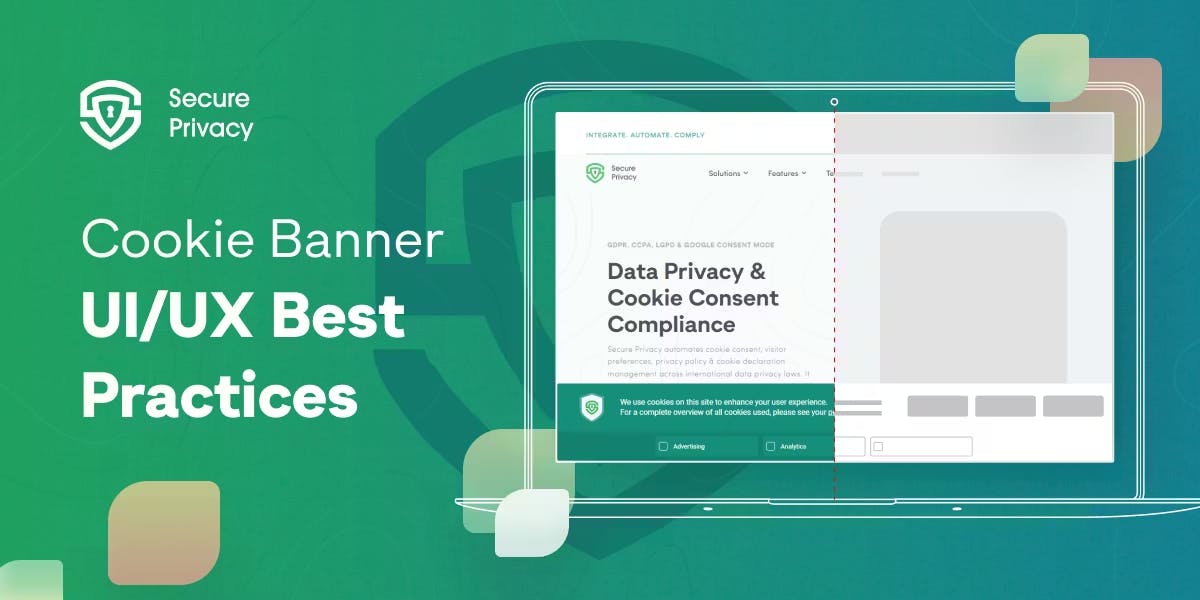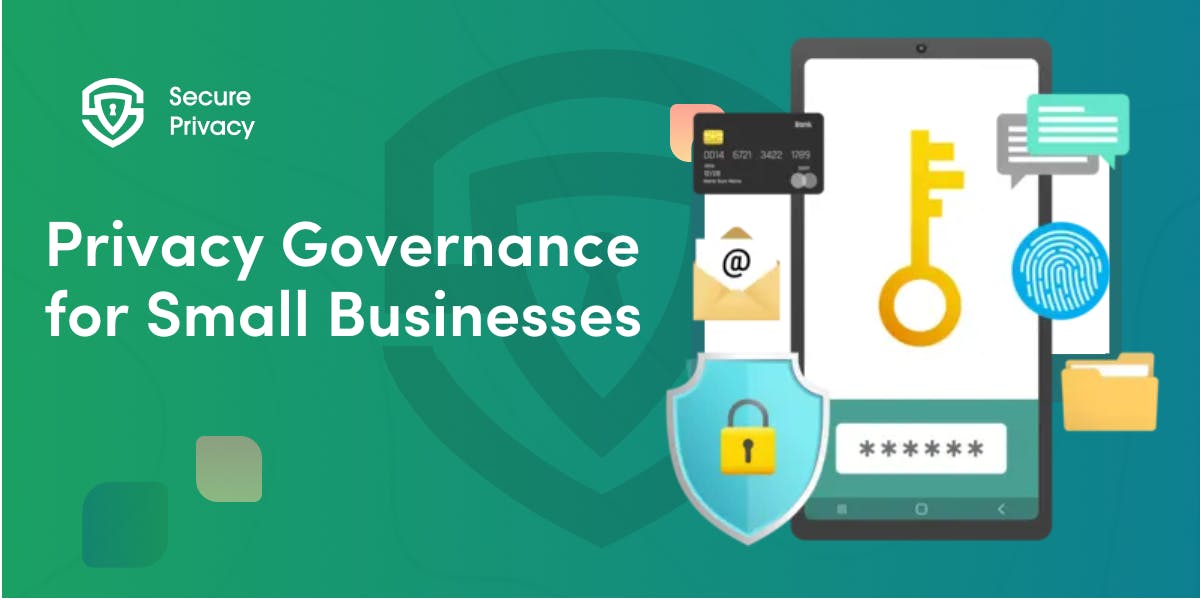Privacy-First Marketing: Complete Guide for 2025
Your marketing team receives this notification Tuesday morning: European Data Protection Board announces coordinated enforcement sweep targeting consent management practices. Companies face scrutiny — inadequate cookie consent, unauthorized behavioral tracking, insufficient transparency. With 86% of consumers viewing privacy as a growing concern and only 27% trusting tech providers, privacy-first marketing transforms from optional consideration into operational imperative.
The landscape shifted dramatically in 2024-2025. The Dutch Data Protection Authority issued a €290 million fine for improper data transfers. The AI company paid €30.5 million for collecting data without consent. Google received €200 million for disguised advertising emails. For marketers managing campaigns through cookies, tracking pixels, behavioral targeting — understanding privacy-first marketing determines whether you maintain growth or face shutdowns.
In this guide, you'll discover what privacy-first marketing is, why it matters in 2025, regulatory requirements, core principles, implementation workflows, tools supporting compliant growth, and how to replace third-party cookies with sustainable first-party data programs.

Prioritizing user privacy is essential. Secure Privacy's free Privacy by Design Checklist helps you integrate privacy considerations into your development and data management processes.
What Is Privacy-First Marketing?
Privacy-first marketing is data collection and engagement framework prioritizing user privacy, transparency, and consent at operations core rather than treating privacy as a compliance checkbox. Unlike traditional digital marketing relying on invasive third-party tracking across websites, privacy-first marketing focuses on collecting zero-party and first-party data through explicit user consent and transparent practices.
Zero-party data comprises information customers voluntarily share through value exchanges — surveys, quizzes, preference centers, loyalty programs. First-party data includes information collected directly through your website, app, email, CRM, customer transactions. Both are more accurate and legally defensible than third-party data collected via cookies and ad networks.
Privacy-first marketing means operationally: Collecting only data necessary for specific purposes (data minimization), obtaining explicit informed consent before processing, providing clear transparency about collection and usage, enabling easy user control including consent withdrawal, using first-party and zero-party data sources exclusively, implementing technical controls blocking tracking until consent obtained.
Traditional digital marketing relies on third-party cookies enabling cross-site tracking with implied consent. Privacy-first marketing uses first-party data collected directly with explicit opt-in consent, transparent on-site tracking, and contextual signals rather than invasive behavioral monitoring. Traditional delivers hyper-targeted advertising creating a "stalked across web" feeling; privacy-first marketing builds trust through respected transparent practices.
Why Privacy-First Marketing Matters in 2025-2026
Regulatory Enforcement Escalation
UK Information Commissioner's Office audited top 1,000 UK websites in 2025 issuing warnings and fines for cookie violations. France's CNIL issued guidance on asymmetric consent button design. Similar enforcement waves occurred under GDPR, CCPA, Brazil's LGPD.
GDPR and ePrivacy require prior consent mandatorily — non-essential cookies must be blocked until users actively opt-in. Granular consent required—users must accept marketing while rejecting analytics separately. No pre-checked boxes or legitimate interest claims for non-essential cookies. Cookie walls blocking website access unless accepting all cookies are forbidden.
CCPA/CPRA use opt-out model but require accessible opt-out mechanisms. A "Do Not Sell or Share My Personal Information" link is mandatory if the website uses tracking cookies. Dark pattern prohibition — opt-out must be as easy as opting in. Global Privacy Control browser signals must be honored.
LGPD (Brazil) requires explicit consent before setting non-essential cookies similar to GDPR. First-layer banner must explain each cookie's purpose separately with granular grant/withdraw options. Portuguese language mandatory for Brazilian users.
India's DPDP Act (2023 Rules 2025) requires clear plain-language notice before collecting personal data. Children's data requires verifiable parental consent. Purpose limitation—data collected for one purpose cannot be used for another without explicit new consent.
Third-Party Cookie Fragmentation
Google announced indefinite cookie support allowing users opt-out via browser settings. However, Safari blocks third-party cookies entirely via Intelligent Tracking Prevention limiting cookies to 7 days. Firefox blocks third-party cookies from known trackers by default. Brave blocks tracking cookies by default.
This fragmented landscape means marketers operate in heterogeneous tracking environment. CPMs on Safari drop 60% compared to cookied Chrome users. Publishers and advertisers pivoted to first-party data strategies, contextual targeting, and alternative measurement models.
Consumer Trust Crisis
86% of adults view privacy as growing concern, 71% would stop using company if data mishandled, only 27% have high trust that tech providers protect data. Simultaneously, 87% of customers pay more for products from trusted brands creating direct business case for privacy-first marketing.
Organizations demonstrating privacy respect build competitive advantages: higher customer lifetime value, lower churn, stronger loyalty, premium pricing power. Privacy-first marketing becomes brand differentiator.
Core Principles of Privacy-First Marketing
Consent-First Data Collection
Privacy-first marketing requires obtaining explicit informed consent before processing personal data. Consent must be freely given (no coercion), specific (per-purpose granularity), informed (clear language), and unambiguous (clear affirmative action). Pre-checked checkboxes violate requirements. Bundled consents combining multiple purposes constitute invalid consent. Consent walls preventing access unless accepted violate "freely given" requirement.
Consent withdrawal must be as easy as consent grant—one-click digital process. Organizations must maintain consent records documenting when consent obtained, what information provided, what users consented to, any preference changes.
Data Minimization
Privacy-first marketing collects only data necessary for specified purposes. Avoid collecting "just in case" data. Design forms and tracking limiting collection to minimum viable data. Example: Giveaway requiring prize shipment needs name, address, phone—not birth date, social media handles, employer, income level.
Transparency and User Control
Privacy-first marketing provides clear plain-language transparency. Privacy notices must explain: what data collected, why collected, how long retained, who receives data, how users exercise rights. Avoid legalese—write for 8th-grade reading level.
User control means easy preference management: View current consents, withdraw any consent with single action, receive immediate confirmation, access preference center from every communication.
Secure Storage and Retention
Privacy-first marketing implements security measures: encryption at rest and in transit, role-based access controls, continuous monitoring and logging, regular testing and audits, data backup procedures.
Retention limits mean defining periods for each data type: Customer accounts (2-3 years post-closure), transactions (6-7 years for legal/tax), browsing data (6 months to 2 years), support records (1-3 years), marketing consent records (indefinite for compliance proof).
Step-by-Step Implementation
Step 1: Audit Your Tracking
Begin with comprehensive cookie and tracking audit identifying all cookies, tracking pixels, third-party scripts. Use automated scanning tools: CookieBot, Usercentrics, Secure Privacy, OneTrust.
Scan website documenting each cookie's purpose, data collected, retention period, third party. Categorize cookies: Strictly Necessary, Functional/Preferences, Analytics, Marketing/Advertising, Performance. Identify pre-consent cookie detection—cookies placed before consent (compliance violation).
Create inventory spreadsheet flagging non-compliant items. Conduct annual comprehensive audit, quarterly spot-checks, triggered audits when new tools added.
Step 2: Deploy Consent Management Platform
Implement technical solution blocking non-essential cookies until consent, managing preferences, logging consent for audits. Select CMP based on: regulatory support (GDPR, ePrivacy, CCPA, LGPD, DPDP), cookie blocking, Google integrations (Consent Mode v2), IAB TCF compliance, multi-domain support, geo-targeting, consent logging.
Leading CMPs: Secure Privacy (white-label customization for agencies, deep cookie scanning, multi-client dashboard, Consent Mode v2 support), OneTrust (enterprise-grade, universal consent across platforms), Cookiebot (automated scanning, Google-certified, simple setup), Usercentrics (180+ countries, comprehensive features, A/B testing).
Deployment: Define goals, test in sandbox, customize banner matching brand, configure integrations (Google Consent Mode v2, GTM, IAB TCF), set up consent logs, train staff, phased rollout, monitor consent rates weekly.
Step 3: Consolidate Consent Logs
Maintain audit-ready consent documentation. Configure CMP logging every interaction: User ID, timestamp, consent categories accepted/rejected, IP address, device type, browser type.
Retain logs minimum 5 years (GDPR), consider 7-year retention for some industries. Generate monthly reports on consent opt-in/opt-out percentages, trends, regional breakdown. Quarterly compliance audit reports.
Configure CMP handling Data Subject Access Requests: All personal data collected, consent history, retention/deletion status. Train support team on response timelines (30-45 days under GDPR).
Step 4: Privacy-Safe Analytics
Deploy privacy-friendly analytics collecting insights without invasive tracking:
Google Analytics 4 with Consent Mode v2: Respects consent choices. Privacy level moderate—tracks via Google's first-party cookie but respects consent. Free with advanced features.
Matomo: Privacy level high—no data sharing, can anonymize IPs, cookieless tracking option. 100% data ownership. GDPR/CCPA/HIPAA/LGPD compliant—no consent banner needed if IP-anonymized. Self-hosted (free plus hosting), Cloud ($19-$99+ monthly).
Plausible/Fathom: No cookies, no personal data by default. GDPR and CCPA compliant—no consent banner required. Plausible ($20-$99 monthly), Fathom ($15-$65 monthly). Limited features but perfect for privacy-conscious organizations.
Step 5: Server-Side Tagging
Server-side tagging shifts data collection from client browsers to server environment. Client-side GTM sends raw event data to custom server, server-side container processes data, forwards to marketing/analytics endpoints.
Benefits: Reduced ad blocker blocking (data sent to first-party domains), consent control (server-side enforces preferences), data minimization (only necessary data sent), reduced client-side tracking.
Implementation: Create server-side GTM container on Google Cloud, map custom domain to container URL, configure web-side GTM sending data to server via custom domain, set up tags/triggers/variables, configure consent mode integration.
Step 6: First-Party Data Strategies
Replace third-party data with sustainable first-party program. Design zero-party data collection through value exchange:
Interactive Content: Quizzes ("Find your perfect product"), assessments ("Evaluate your marketing maturity"), calculators ("Estimate your ROI"), polls, preference centers.
Loyalty Programs: Sign-up with profile info, tier-based benefits, points for referrals/shares/reviews.
Gated Content: Whitepapers, ebooks, webinars behind email signup. Case studies, guides, templates requiring company info.
Collect with consent ensuring explicit opt-in. Be transparent about usage. Respect preferences—honor unsubscribes.
Integrate first-party data: CRM sync (push form submissions immediately), email platform (sync preferences with segmentation), ads platform (upload email lists as Custom Audiences), CDP (centralize data, create unified profiles).
Activate data: Email marketing (segment by industry, role, preferences), website personalization (show different content based on past behavior), product recommendations, lookalike audiences, lifecycle campaigns (onboarding → nurture → win-back).
Step 7: Privacy-First Campaigns
Design campaigns respecting privacy while achieving performance. Use contextual targeting aligning ads with page content—AI analyzes page content matching ads to topics without user-level tracking. Projected 13.8% annual growth through 2030.
Implement email-driven lifecycle campaigns: Collect emails at value-exchange moments, segment by permissions, run personalized email to consented audiences, use email to drive repeat traffic, measure engagement through opens/clicks.
Build lookalike audiences from first-party data: Upload customer email lists to platforms, platforms create lookalike audiences finding similar users, target with acquisition campaigns, no third-party cookies required.
Tools Supporting Privacy-First Marketing
Consent Management Platforms
Secure Privacy: Best for agencies, multi-client compliance. Full white-label customization, deep cookie scanning with real-time threat detection, multi-client dashboard, automatic Consent Mode v2/CCPA/LGPD/DPDP support, visual consent logs, fast deployment, Agency Partner Program.
OneTrust: Best for large enterprises. Universal consent across web/mobile/connected TV, cross-domain synchronization, advanced A/B testing, comprehensive preference centers, enterprise-grade analytics. Custom pricing $5,000-$50,000+ annually.
Cookiebot: Best for mid-market, SMBs. Automated cookie scanning with high accuracy, Google-certified, simple setup, TCF v2.2 support, WordPress plugin, multilingual (40+ languages), Consent Mode v2 integration. Pricing $120-$360 annually.
Usercentrics: Best for global organizations. Operates in 180+ countries, comprehensive features, excellent A/B testing for consent optimization, Google-certified, multi-language support, advanced analytics. Starts ~$250 annually.
Privacy-Safe Analytics
Matomo: Best for privacy-first organizations wanting data ownership. 100% ownership (self-hosted option), GDPR/CCPA/HIPAA/LGPD compliant, no third-party data sharing, cookieless tracking, advanced features. Self-hosted (free plus hosting), Cloud ($19-$99+ monthly).
Plausible: Best for bloggers, publishers, small SaaS. Extremely privacy-friendly (no cookies, no personal data), simple dashboard, GDPR/CCPA compliant—no consent banner needed. Pricing $20-$99 monthly.
Fathom: Best for small businesses, creators. Cookieless by default, anonymized IPs, GDPR/CCPA compliant without consent banner, blocks bots, simple setup. Pricing $15-$65+ monthly.
Google Analytics 4: Best for large organizations already using Google products. Free, integrated with Google ecosystem, advanced features, Consent Mode v2 support respecting consent. Requires explicit consent under GDPR.
Data Governance
Customer Data Platforms: Segment ($120-$1,000+ monthly) integrates first-party data routing to 300+ destinations. mParticle ($500+ monthly) enterprise CDP with advanced identity resolution. Ensure CDP respects consent preferences.
Data Clean Rooms: Enable privacy-safe collaboration. Snowflake Data Cloud (custom pricing) managed a clean room using secure multiparty computation. Google Ads Data Hub (custom pricing) clean room for Google-connected data. Organizations upload anonymized data, clean rooms performs privacy-safe matching, results include only aggregated insights.
Industry Applications
Agencies: Multi-Client Compliance
Deploy Secure Privacy or OneTrust across all client domains with multi-client dashboard showing consent rates per client, non-compliant cookies detected, upcoming audits, client readiness reports.
Standardize compliance: Run cookie audit for every new client, deploy pre-configured CMP within 1 week, set up automated monthly scanning. Add "Privacy Compliance" as retainer service—monthly reporting, quarterly audits, DSAR handling support.
Agencies including privacy services win repeat business and referrals. Compliance becomes a competitive differentiator. Agencies using partner programs report improved retention and higher contract values.
SaaS: Controller and Processor Roles
SaaS companies operate as both controllers (user account management, billing) and processors (customer data handling). For controller responsibilities: Establish lawful bases (consent for marketing or legitimate interest for service improvement), implement data minimization, document processing in Records of Processing Activities, handle data subject requests within 30 days.
For processor responsibilities: Execute only as controller instructs, implement security measures, maintain processing records, notify controllers of breaches without undue delay, assist with rights requests, ensure sub-processors meet compliance.
Key checklist: Conduct data flow mapping, define lawful basis for each activity, create Records of Processing Activities, establish Data Processing Agreements with customers, implement rights functionality (access, deletion, portability), document security measures, maintain breach detection.
Frequently Asked Questions
What is privacy-first marketing?
Privacy-first marketing is data collection framework prioritizing user privacy, transparency, and consent at operations core. It focuses on collecting zero-party and first-party data through explicit user consent rather than invasive third-party tracking. Key elements include consent-first collection, data minimization, transparency and user control, secure storage, and compliance with GDPR/CCPA/LGPD/DPDP.
What tools do you need for privacy-first marketing?
Essential tools include: Consent Management Platforms (e.g., Secure Privacy), privacy-safe analytics (Matomo for data ownership, Plausible/Fathom for cookieless tracking, GA4 with Consent Mode v2), first-party data activation tools (Segment, mParticle, Salesforce, HubSpot), data clean rooms (Snowflake, Google Ads Data Hub), server-side tagging (GTM Server-Side, Stape, Jentis).
Is privacy-first marketing compatible with performance marketing?
Yes, when implemented strategically. E-commerce brands using privacy-first CDP strategies report 43% higher customer lifetime value. Segmented consent-based email campaigns often outperform broad behavioral targeting (8% CTR vs 2%). However, cookieless audiences see 30-60% lower CPMs. Privacy-first marketing can drive equal or better results with strong first-party data programs. Users who consent are more likely to engage—trust increases conversion by 87% willingness to pay more.
How do cookies impact GDPR compliance?
GDPR and ePrivacy require non-essential cookies blocked until users actively opt-in. Consent must be granular (users accept marketing while rejecting analytics separately), freely given (no pre-checked boxes or cookie walls), and documented. Violations include: cookies set before consent, asymmetric button design, legitimate interest claims for non-essential cookies, bundled consents. Organizations must maintain consent records minimum of 5 years.
What are first-party data strategies?
First-party data strategies focus on collecting information directly from users through owned channels. Collection methods include: website forms and account creation, purchase history, email engagement, CRM integration, loyalty programs, interactive content (quizzes, assessments), gated content (whitepapers, webinars). Activation involves: personalizing experiences, adapting campaigns based on preferences, improving conversion via recommendations, segmented email campaigns for lifecycle stages.
How do you measure marketing without third-party cookies?
Use privacy-friendly alternatives: Implement first-party analytics (e.g. GA4 with Consent Mode v2), deploy server-side tagging (enforces consent server-side), use modeled conversions (machine learning estimates behaviors), leverage data clean rooms (privacy-safe matching), conduct incrementality testing (holdout tests estimating impact), implement contextual targeting (align ads with page content), build email-based attribution (track through opens/clicks).
Conclusion
Privacy-first marketing has transitioned from future trend to operational necessity. The convergence of regulatory enforcement (GDPR, CCPA, LGPD, DPDP), consumer trust collapse (only 27% trust tech providers), browser-level tracking restrictions (Safari, Firefox blocking), and first-party data alternatives has made traditional third-party cookie-dependent marketing unsustainable.
Organizations with strong first-party data programs—email lists, purchase history, preference centers, loyalty programs—are thriving. Brands respecting privacy report higher customer lifetime value, lower churn, stronger loyalty. CMPs, privacy-friendly analytics, server-side tagging, and data clean rooms make privacy-first marketing operationally feasible without abandoning personalization.
Action items for 2025: Conduct comprehensive cookie audit, deploy CMP and Consent Mode v2, launch first-party data collection programs, implement privacy-friendly analytics, build consent-based email automation, train teams on privacy requirements, monitor emerging regulations. Organizations mastering privacy-first marketing in 2025 have competitive advantage.
Ready to strengthen your privacy-first marketing capabilities? Explore Secure Privacy's comprehensive consent management platform: automated cookie scanning and blocking before consent, Google Consent Mode v2 integration, exportable audit logs, multi-language support, geo-targeting for region-specific requirements, white-label agency branding. Schedule demo discovering how privacy automation eliminates manual compliance burden while delivering sustainable growth through ethical transparent marketing practices building customer trust.
Get Started For Free with the
#1 Cookie Consent Platform.
No credit card required

GDPR Consent Management: Complete Guide + Tool Comparison
Your website could be costing you €20 million. Every cookie that loads before user consent, every "accept all" button without an equally prominent reject option — these aren't minor oversights. They're violations that data protection authorities are actively hunting.
- Legal & News
- Data Protection

How to Design High-Performing Cookie Banners in 2026
“You're one click away from a €325 million fine”. That's what Google learned in September 2025 when French regulators hit them for cookie consent violations. The message is clear: cookie banner design in 2026 isn't about getting extra clicks anymore — it's about survival.
- Legal & News
- Data Protection

Privacy Governance for Small Businesses: Step-by-Step Guide
You're a 20-person company. A customer asks for their data. Your marketing team just added a new tracking pixel. Your CRM vendor updated their terms. And you just realized you might need to comply with GDPR, CCPA, or both.
- Legal & News
- Data Protection
